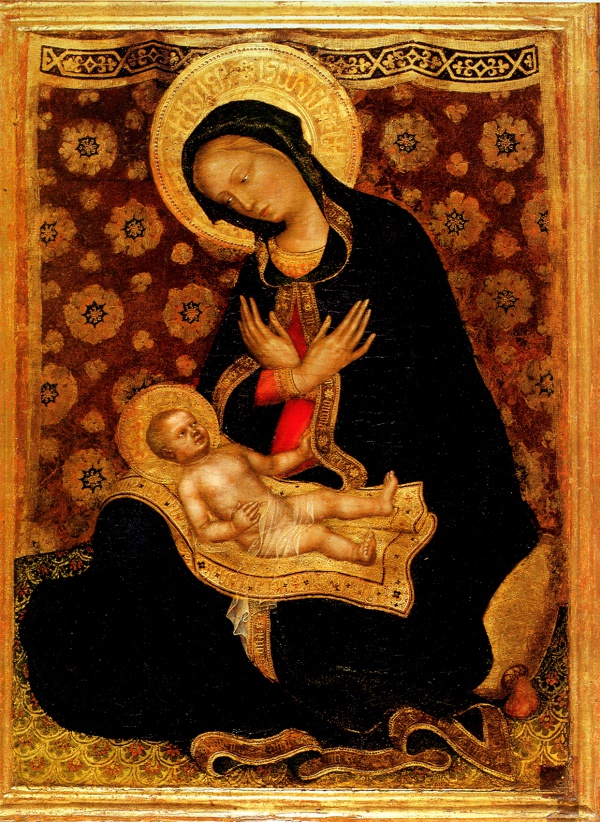Facts About Madonna of Humility
The "Madonna of Humility" is a splendid tempera-on-panel painting by Gentile da Fabriano, an eminent Italian artist of the late medieval period. Created between 1420 and 1423, this masterpiece now resides in the Museo Nazionale di San Matteo in Pisa. Originally part of the Pious House of Misericordia, it was likely commissioned for private devotion, possibly by Cardinal Alemanno Adimari, the Archbishop of Pisa.
In this painting, the Virgin Mary is depicted seated on a cushion on the ground, tenderly holding the Baby Jesus on her lap. They are positioned atop an elaborately decorated gilt cloth. The artwork is distinguished by its intricate details, including a finely crafted golden background and exquisitely rendered garments, which are characteristic of Gentile's Florentine period. The Virgin’s mantle features the inscription "AVE MT DIEGNA EI" and the cloth beneath the Child bears Arabic characters. These characters have been interpreted as the Quranic Shahada (لا إله إلا الله - Lā ilāha illa Allāh), although the precise reason for this inclusion remains a mystery.
Gentile da Fabriano also produced a similar piece around 1420-1421, which presents the Virgin in a frontal view. "The Madonna of Humility" is an exquisite example of a common theme in early 15th-century Western art. It underscores Gentile's exceptional talent in depicting religious subjects with meticulous detail and profound symbolism.

 Slovenia
Slovenia